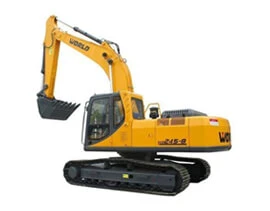Nov . 17, 2024 08:21 Back to list
wire mesh dimensions
Understanding Wire Mesh Dimensions A Comprehensive Guide
Wire mesh, a versatile material widely used across various industries, comes in multiple dimensions and designs tailored to suit specific applications. From construction to filtration, the choice of wire mesh dimensions plays a crucial role in determining its effectiveness and suitability for a given task. In this article, we will explore the importance of wire mesh dimensions, the factors influencing these dimensions, and how to select the right wire mesh for your needs.
What is Wire Mesh?
Wire mesh, or wire cloth, is a network of intersecting wires that are woven together to create a grid-like structure. Produced in various materials, including stainless steel, aluminum, and galvanized steel, wire mesh is known for its strength and durability. It is commonly used in applications such as fencing, sieving, filtering, and reinforcing structures.
Importance of Wire Mesh Dimensions
The dimensions of wire mesh refer to its thickness (or gauge), the size of the openings (mesh size), and the overall size of the sheet or roll. These dimensions are critical because they affect the mesh's load-bearing capacity, airflow, aesthetic appeal, and filtration efficiency.
1. Wire Diameter (Gauge) The thickness of the wire impacts the strength and flexibility of the mesh. Thicker wires can bear more weight and resist damage but may not be as flexible or easy to manipulate. The American Wire Gauge (AWG) system is commonly used to denote wire thickness, with lower gauge numbers representing thicker wires.
2. Mesh Size (Opening Size) The size of the openings in the mesh determines what can pass through it. For instance, a finer mesh may be ideal for filtering small particles, while a larger opening is suitable for applications where larger items need to be contained. Mesh size is usually expressed in terms of the number of openings per inch or the size of the openings themselves in millimeters.
3. Panel Size This refers to the dimensions of the wire mesh itself—length and width. Panels can be custom cut to fit specific applications, and their size can influence how easily the wire mesh can be installed and used.
Factors Influencing Wire Mesh Dimensions
When selecting wire mesh dimensions, several factors should be considered
1. Application Requirements Different applications will demand different dimensions. For instance, a construction site may require robust, heavy-duty wire mesh, while a laboratory needing filtration might opt for fine mesh with small openings.
wire mesh dimensions

2. Load Expectations Assessing the expected load can help determine the appropriate wire diameter. Heavy loads may necessitate thicker wires, while lighter applications can utilize thinner meshes.
3. Environmental Conditions The environment in which the wire mesh will be used influences the choice of dimensions. Corrosive environments, such as marine settings, may require thicker and more durable meshes to withstand exposure to harsh elements.
4. Regulatory Standards Certain industries may have specific regulations that dictate the dimensions and materials of wire mesh used, particularly in construction, food processing, and healthcare.
How to Choose the Right Wire Mesh Dimensions
Selecting the right wire mesh dimensions involves several steps
1. Define the Purpose Start by outlining the specific application you need the wire mesh for, including any specific filtration or containment needs.
2. Evaluate Load and Strength Needs Assess the weight and volume of the materials the mesh will support to determine the necessary wire diameter and mesh size.
3. Consider Environmental Factors Take stock of the environment, including temperature and exposure to chemicals or moisture, to choose a mesh that will last.
4. Consult Experts If uncertain, consulting with manufacturers or industry experts can provide guidance tailored to your unique needs.
Conclusion
Understanding wire mesh dimensions is essential for leveraging the material’s full potential in various applications. By considering factors such as wire diameter, mesh size, and environmental conditions, you can make informed decisions that ensure your wire mesh meets your specific needs effectively. Whether for industrial, commercial, or residential use, selecting the right dimensions can significantly enhance the performance and longevity of your wire mesh.
-
Reinforcing Mesh: Core Material of the Construction Industry
NewsJul.07,2025
-
Welded Wire Fabric Reinvented for Modern Projects
NewsJul.04,2025
-
Superiority of Stainless Steel Woven Mesh
NewsJul.04,2025
-
Key Types of Razor Wire and Their Applications
NewsJul.04,2025
-
Durable Metal Fence Types for Security
NewsJul.04,2025
-
Best Materials for Livestock Fence
NewsJul.04,2025
products.







